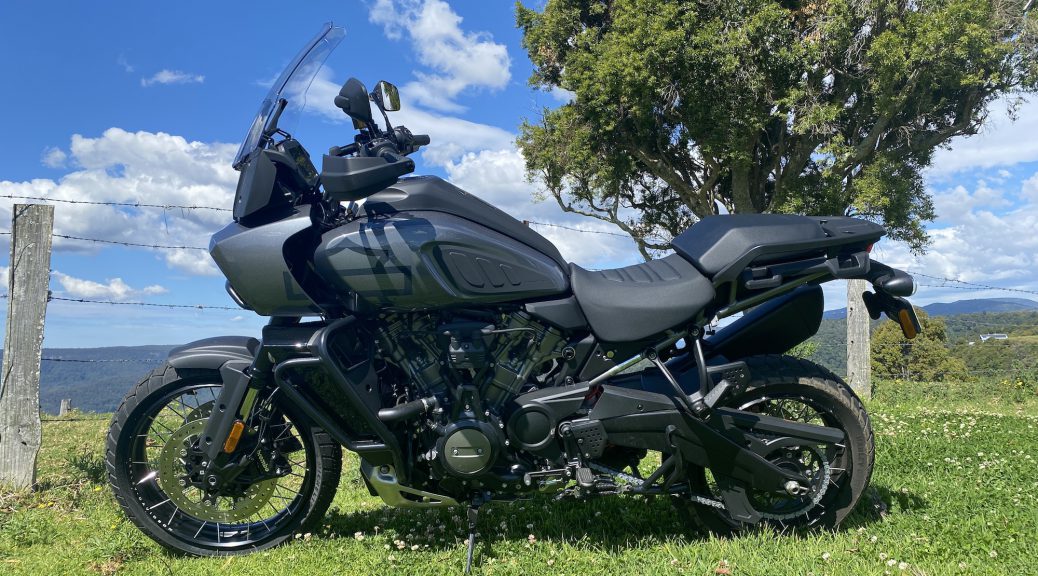I’m thinking of writing a letter to Harley-Davidson boss Jochen Zeitz asking him to rename their new adventure bike the Pan Australia, rather than the Pan America.
There is no more suitable country than Australia for such a bike where half of the gazetted roads are dirt and the other half riddled with potholes and corrugations; where the dual-cab ute and SUV have taken over as the family vehicle; and where it’s a couple of packed lunches between servo stops.
Here the unaptly named Pan America stands proud as a conveyor of riders across everything from single track to freeways and even the daily commute.
Based on price, performance and efficiency, it sits toward the top of the growing heap of popular litre-plus behemoth adventure bikes.
Harley-Davidson’s first adventure motorcycle comes in two models overseas, but in Australia and New Zealand arrives in the up-spec Special model only, priced at $A31,995 ride away ($NZ33,995).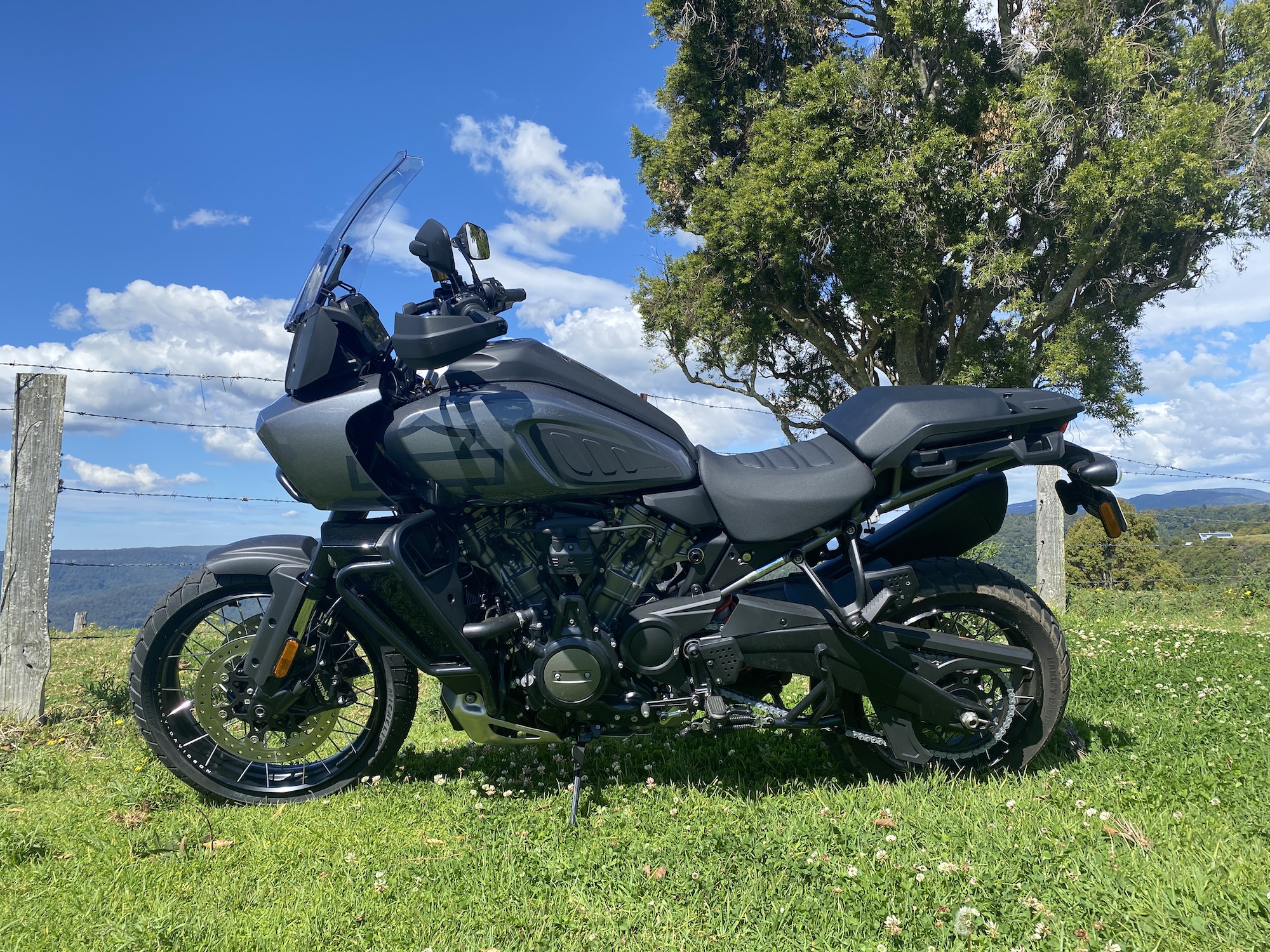
That’s fairly competitive when compared with Euro rivals from BMW, Ducati, KTM and Triumph.
The base model has mag wheels and is more road oriented, while the Special is an adventure tourer with electronically adjustable semi-active suspension, tyre pressure monitors, centre stand, multi-position rear brake pedal, hand guards, aluminium skid plate, Daymaker headlight, heated hand grips, cruise control and steering damper.
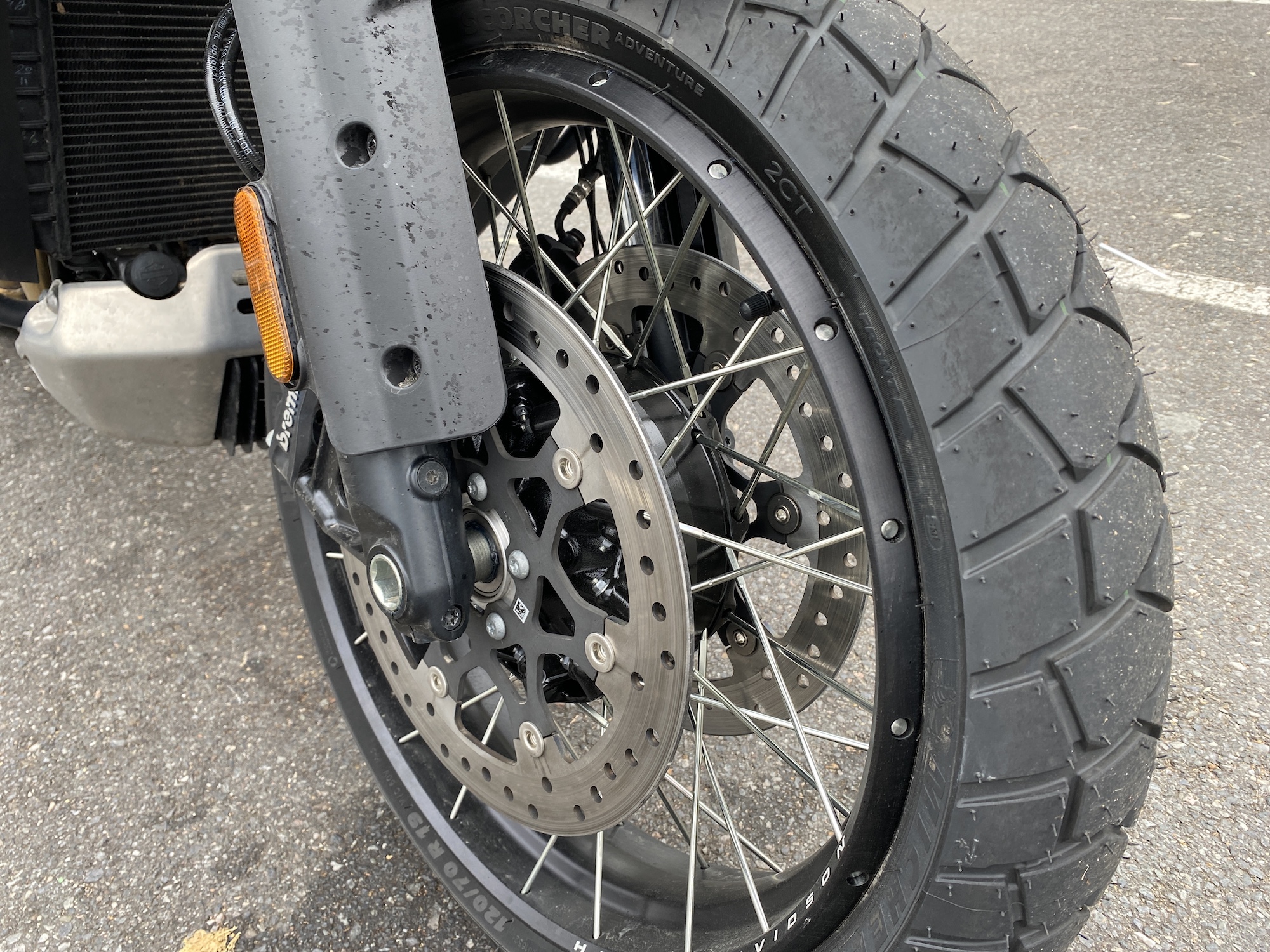
Options include tubeless spoked wheels like BMW’s GS and adaptive ride height which were fitted to my test bike at a package cost of $1485.
Over the course of two weeks, I took it on pretty much every type of gazetted road in Australia from sandy single track, through some mud, B grade potholed country roads, suburban commuting and highways.
The big Harley may look like a big, black, plastic wheelie bin, but it certainly is a practical and accomplished all-roader. 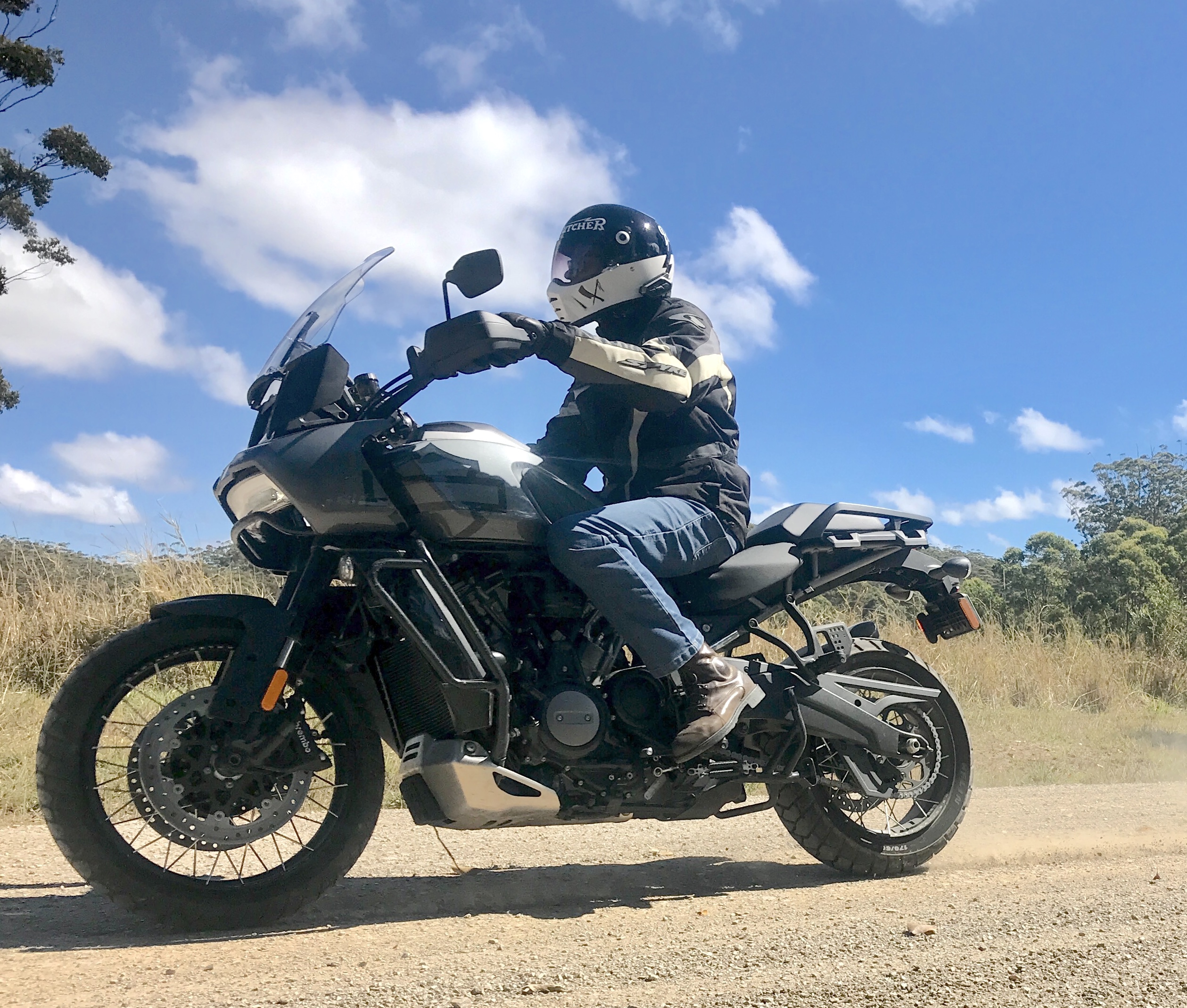
What it isn’t, is a Harley; or at least it does not look, feel, sound nor perform like any of the hundred-plus Harleys I’ve ridden in the past couple of decades.
In fact, one of the world’s most recognised brand names is only discretely displayed on the wheels and rocker covers, with blank bar-and-shield logos on the tank.
The engine may be a V-twin like all other Harleys, but the new liquid-cooled Revolution Max 1250 feels, sounds and performs more like a parallel twin.
There is none of the thump and big-bottomed torque of Harley’s big V-twins. Instead, it is a refined engine with variable valve timing and a good spread of power.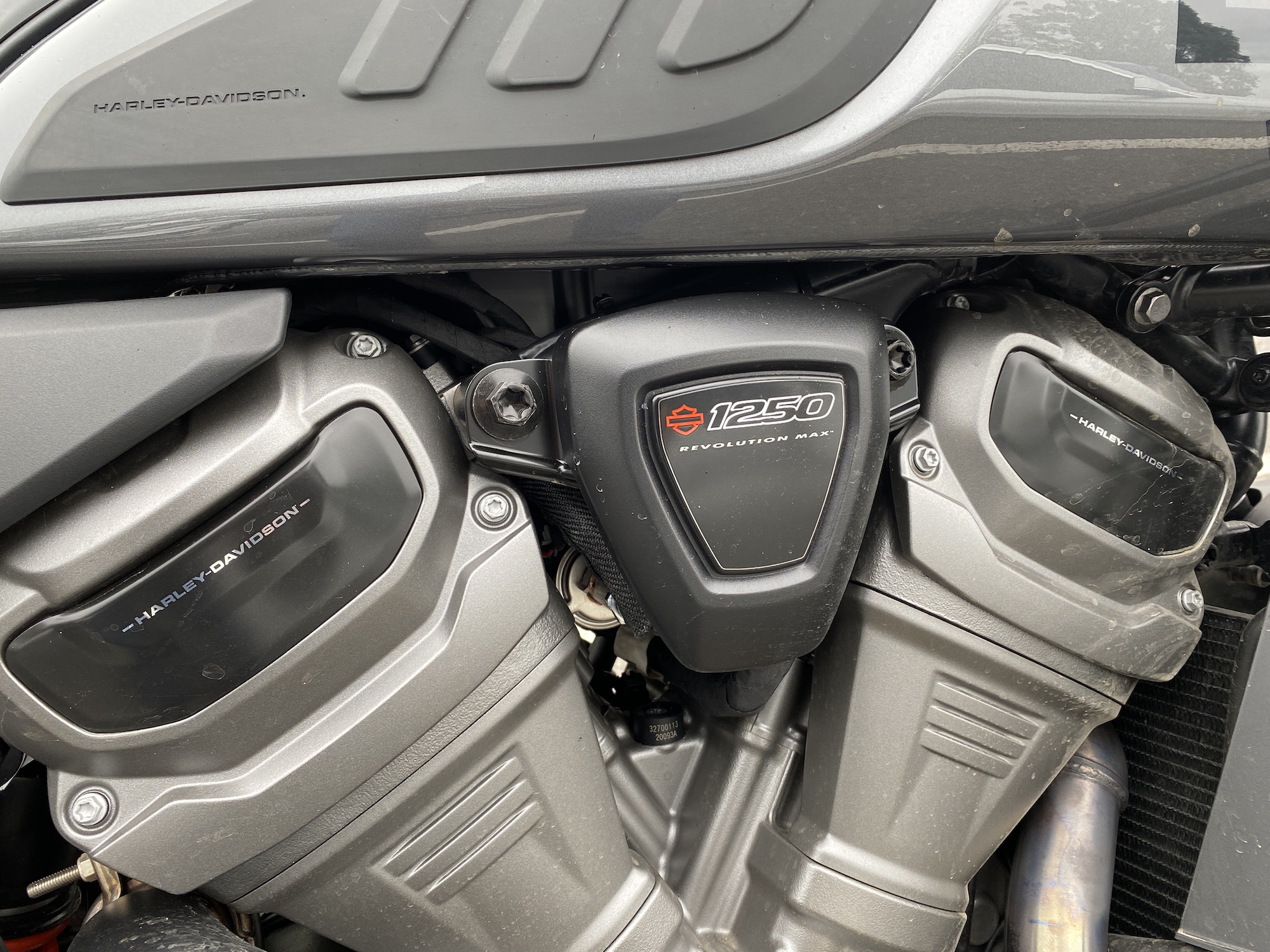
With 112kW of power, it’s only beaten by Ducati’s Multistrada, while the torque monster BMW at 142Nm is the only big adventurer with more grunt than PanAm’s 127Nm.
However, maximum power and torque do require many more revs than other Harleys or the BMW GS juggernauts.
And it doesn’t have that iconic potato-potato sound that Harley famously and unsuccessfully once applied to trademark.
The engine is married to an un-Harley-like slick transmission where neutral is easy to find and the gears mesh so nicely you can cluthlessly shift up and down through most cogs.
At 100km/h in sixth, it is spinning at 3800rpm which is about 1200 revs higher than most Harley engines.
The spread of ratios allows low gearing for technical terrain as well as a reasonably vibe-free smooth run on the highway.
Here you can flick on the cruise control and be assured that you won’t cop a ticket for inadvertent speeding since it doesn’t pick up pace going downhill.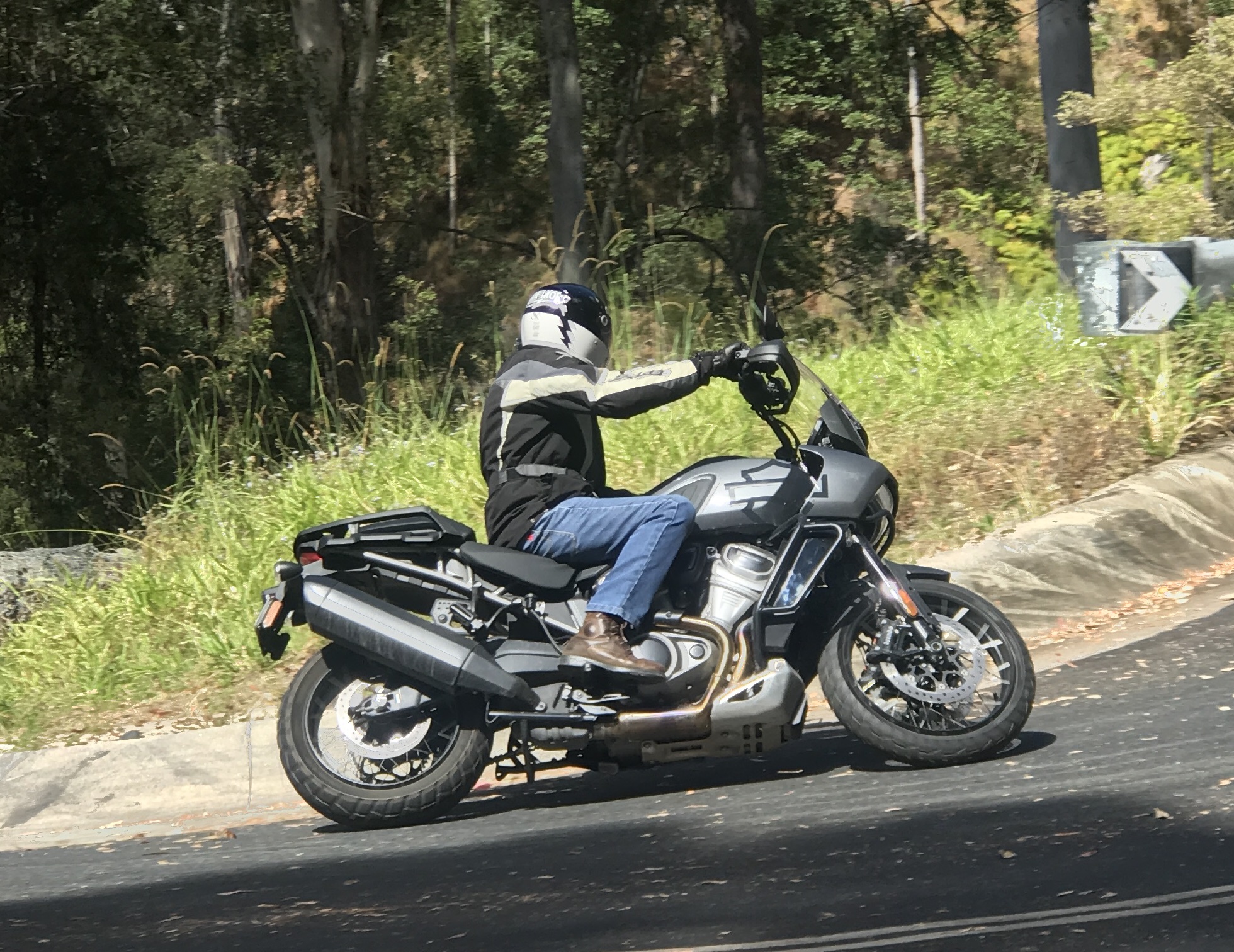
While other brands may be introducing adaptive cruise control that regulates the speed according to the vehicle in front, at least Harley’s cruise will protect your licence, albeit with a strange surging feel as it tries to stick to your selected speed.
Like most big adventurers, it stands tall with high bars, footpegs, windscreen and tank.
Yet the adjustable seat height is relatively moderate for adventurers at 850mm with an optional suspension dropping it to 830mm, so it should a wide range of riders.
Ergonomics are comfortable with a commanding riding position, plenty of leg room, a generous reach to the bars and a big, plush saddle for both rider and pillion who also gets massive hand grips that double as discrete mounts for panniers.
It’s accommodation that will convey rider and pillion hundreds of kilometres in comfort and with plenty of protection from the windscreen with three-level adjustment.
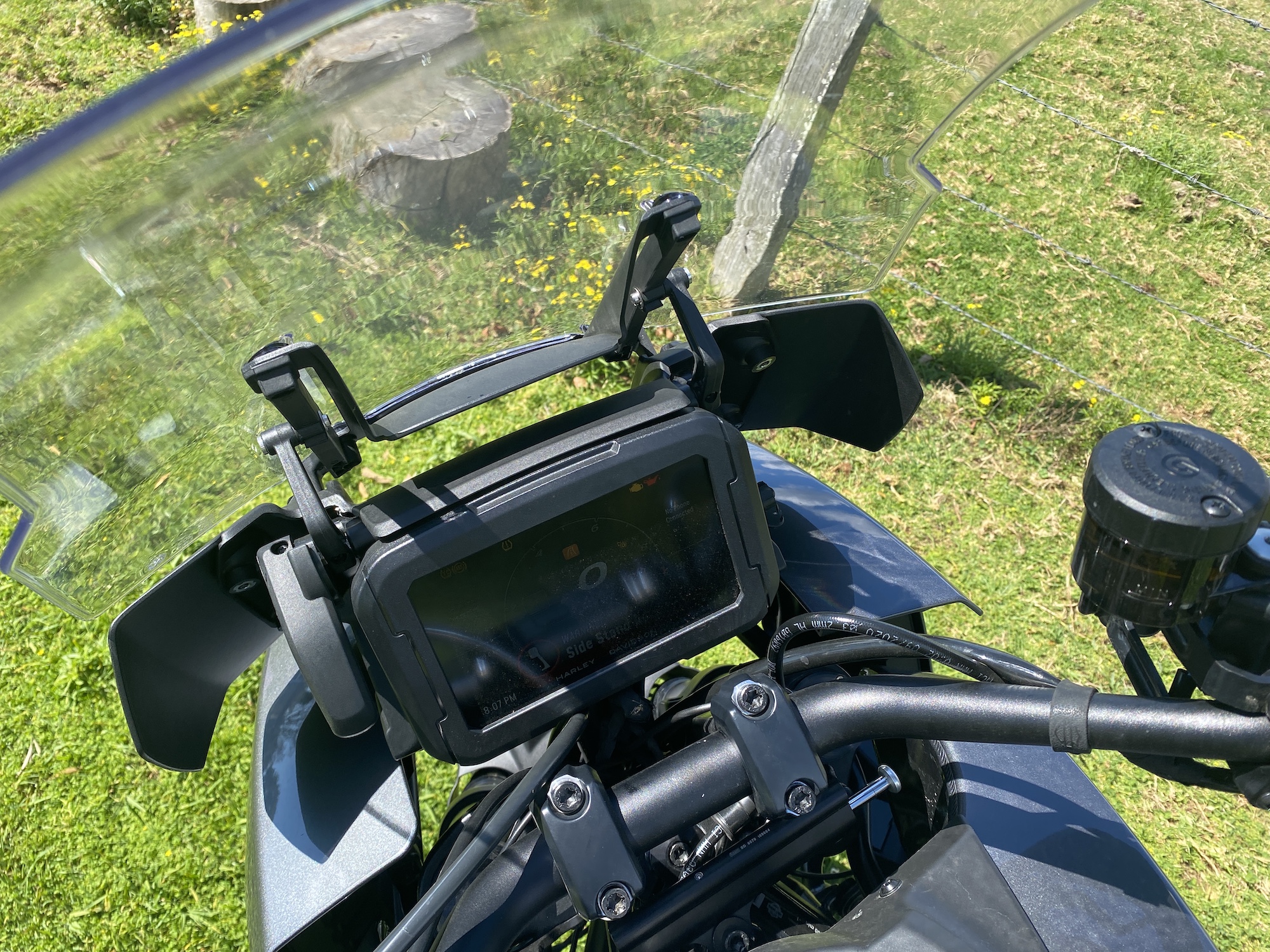
You can adjust the screen via a lever on the left so you can keep your right hand on the throttle. However, I found it a bit awkward to adjust on the fly, so I suggest pulling over to change the screen height.
On rough terrain, the standing position on generously sized footpegs with pop-out rubber inserts is also congenial without the need for bar risers.
Surprisingly, the company that previously boasted it made “heavy motorcycles” is not the heaviest of the adventurers at 253kg, which is 15kg less than the market-leading BMW R 1250 GS.
While no behemoth adventure bike feels at home on single track, the top-heavy Harley does not feel too awkward.
Despite the V-twin confirmation placing a lot of weight high in the chassis, it feels well balanced and not overly hefty.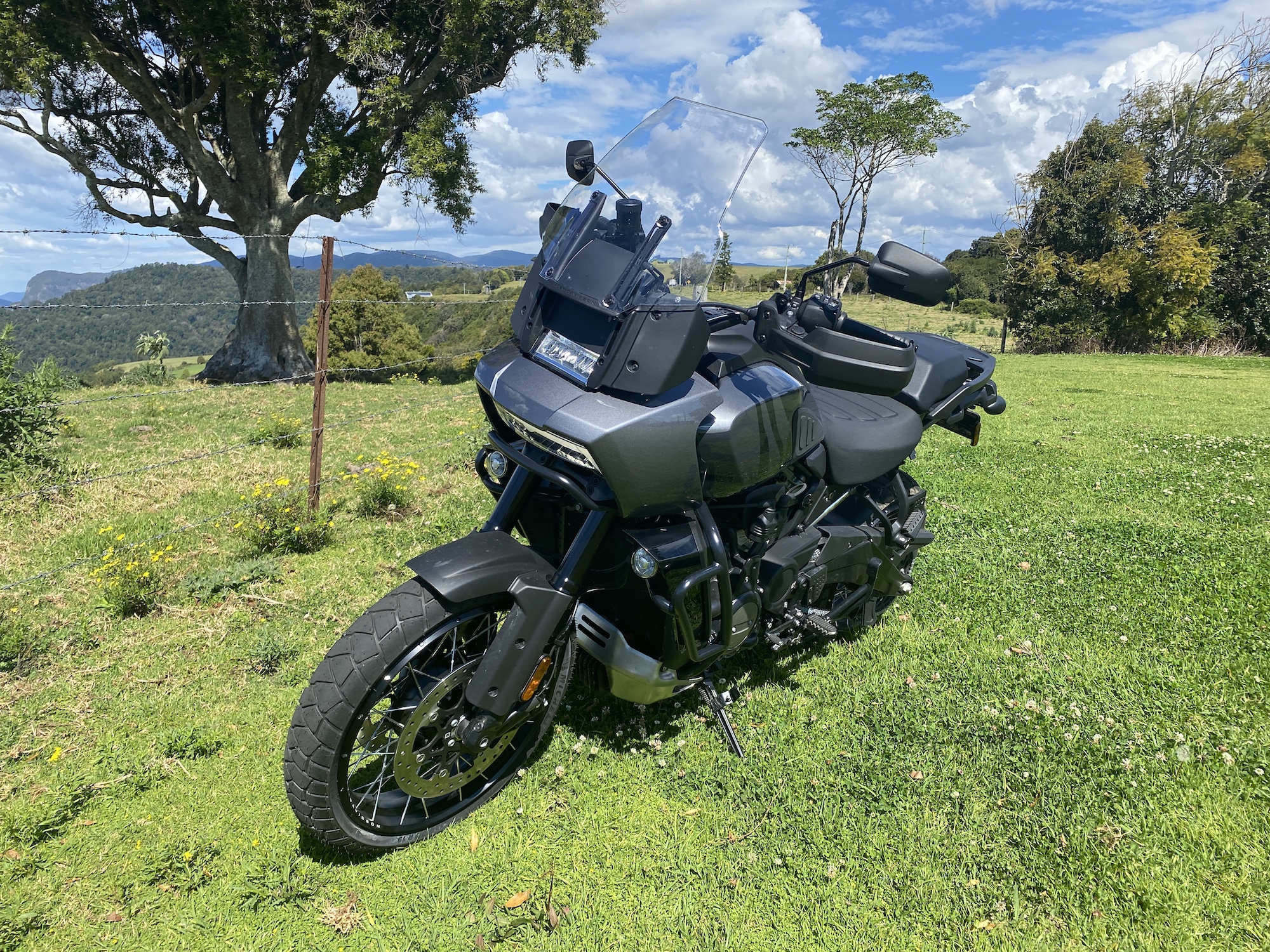
However, in the standing position, you can’t see the front tyre which makes it difficult to precisely place the front wheel in or out of ruts.
All big adventure bikes are now marvels of technology and the PanAm is no different with a massive 6.8 inch TFT display showing speedometer, gear, odometer, fuel level, clock, trip, ambient temp, low temp alert, side stand down alert, tip-over alert, cruise, range and tacho.
All that info is available on the home screen, but the type on some info is small and difficult to read.
However, you can scroll through various screens where the information is tailored with larger and easier-to-read letters and numbers.
It comes with four preset riding modes (highway, rain, sport and enduro) that adjust throttle sensitivity, ABS, power output, traction control and suspension damping, plus a customisable mode that you can tailor to suit your needs and riding style.
You can also pair your phone to the bike and access phone calls, music and navigation through the H-D app.
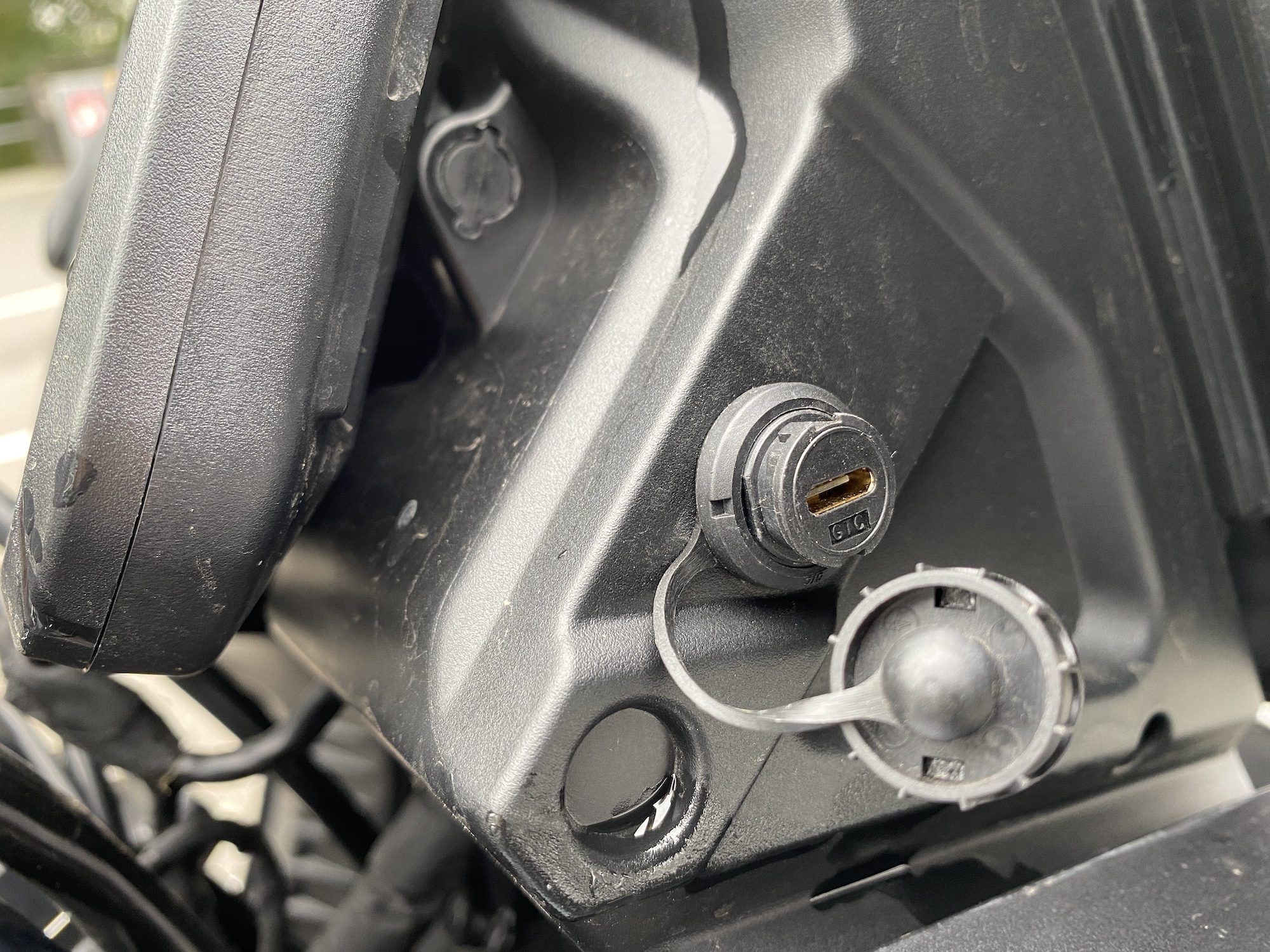
All controls are easily reachable on the plethora of switches and buttons on the two big switch blocks.
Harley has long had sidestands that lock so they won’t roll forward and fall over. The PanAm continues that sensible tradition, but it’s a bit short and too far forward for my liking, making it difficult to deploy on flat ground or where there is a slight uphill on the left.
The massive centre stand is welcome, but difficult to deploy without assistance from a pillion or riding buddy.
You can dress up the PanAm with a wide range of Harley accessories, including three durable luggage systems, as well as adventure riding gear for men and women developed in collaboration with respected European motorcycle apparel specialist, REV’IT!.
Pan America Special tech specs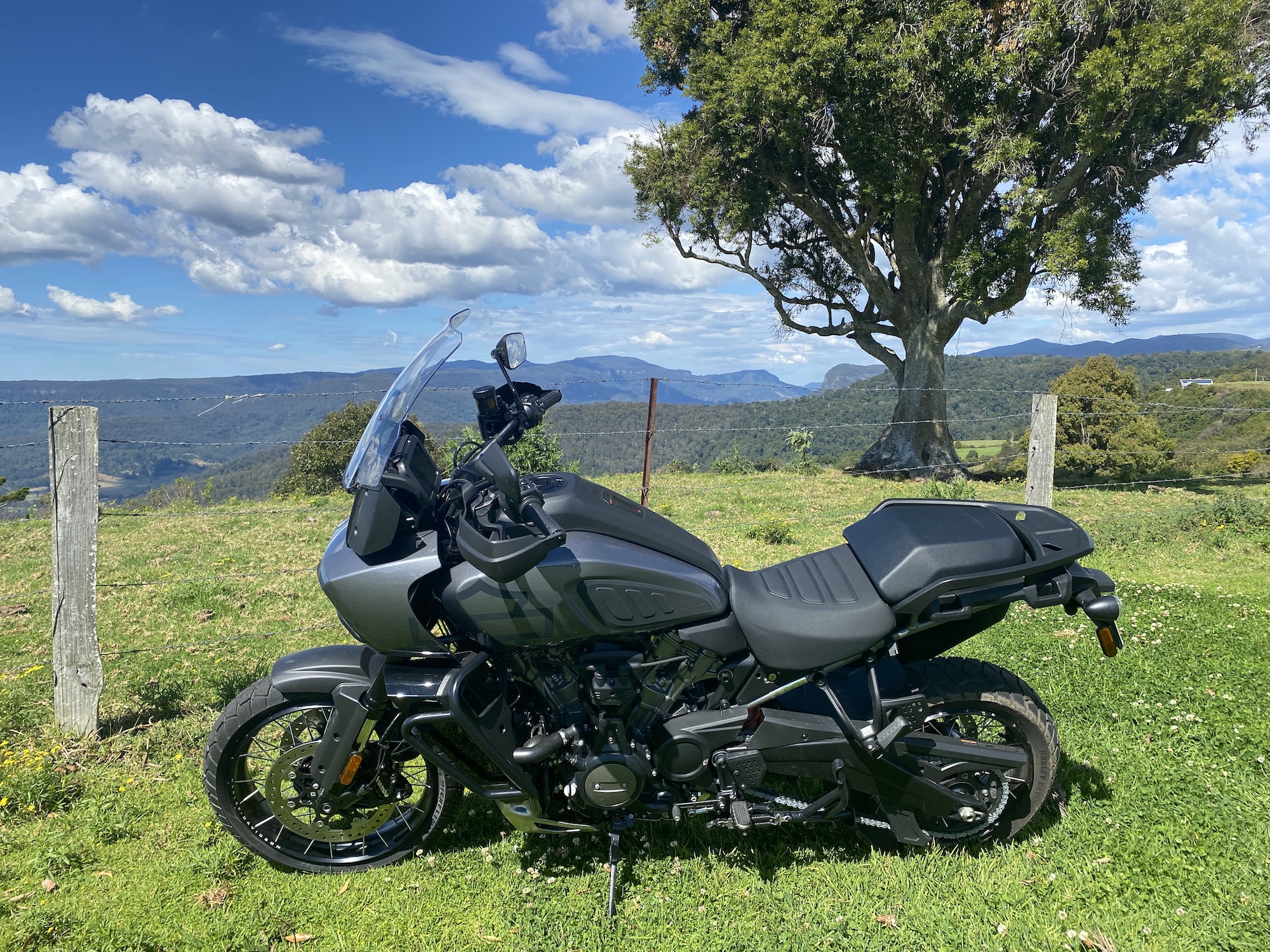
- Price: from $31,995 ride away (test bike included tubeless spoked wheels and adaptive ride height at $1485).
- Warranty: 2 years/unlimited km.
- Engine: liquid-cooled, VVT, Revolution Max 1250cc V-twin.
- Power: 112kW @ 9000rpm.
- Torque: 127Nm @ 6750rpm.
- Gearbox: 6-speed, chain drive.
- Weight: 253kg.
- Suspension front/rear: 47mm inverted fork with electronically adjustable semi-active damping control. aluminium fork triple clamps / Linkage-mounted monoshock with automatic electronic preload control and semi-active compression & rebound damping.
- Brakes front/rear: 4-piston radial monoblock caliper, 320mm discs / single-piston floating caliper, 280mm disc, ABS.
- Dimensions: 2265mm (L); 965mm (W); 1510mm (H); 1580mm (WB); 850mm (S)
Source: MotorbikeWriter.com

